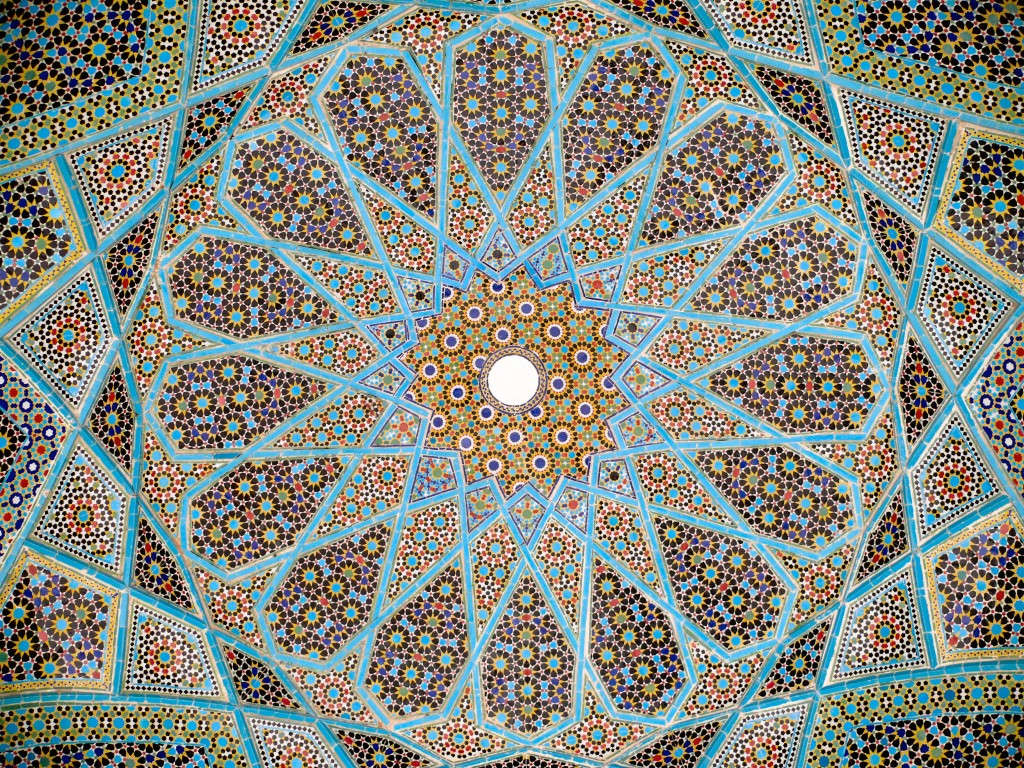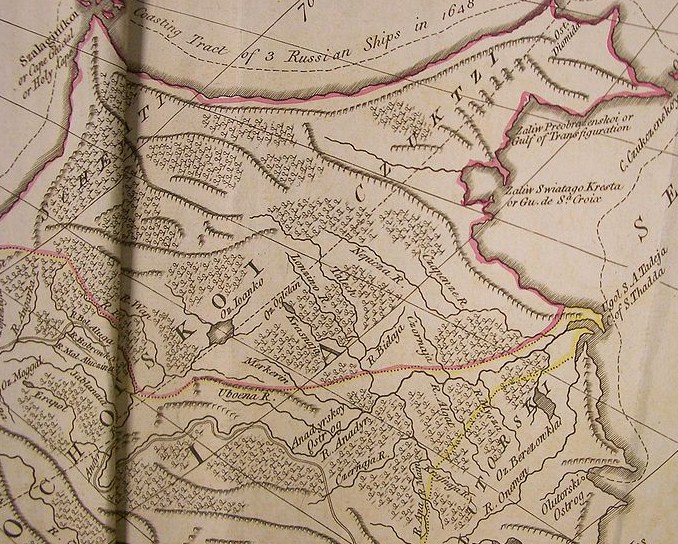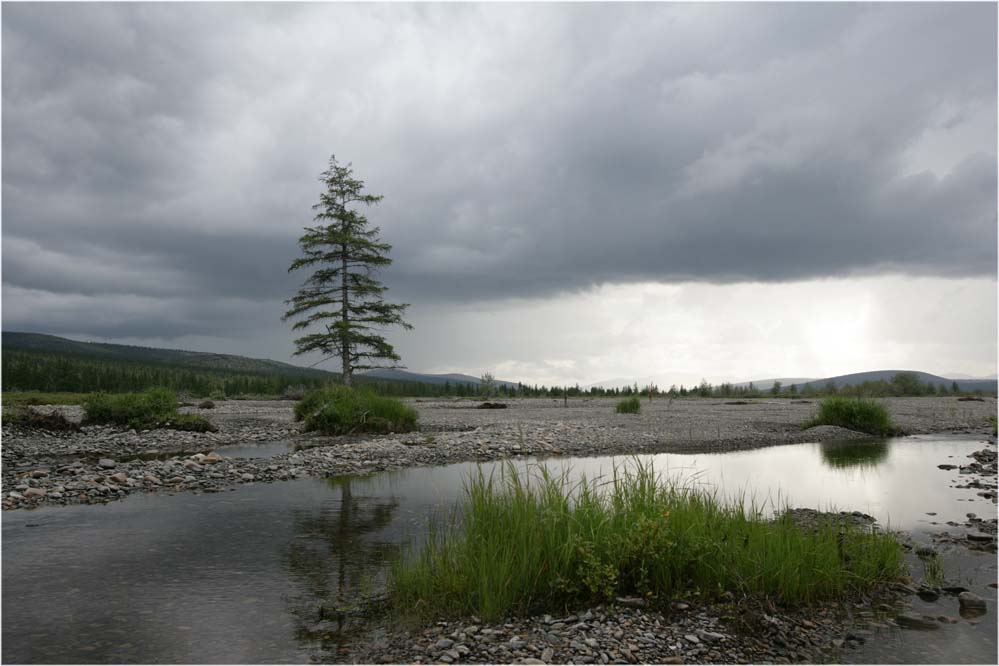When I interviewed Paul Steinhardt, the theorist of the title above, I told him I loved this story so much that it should be turned into a book and if he wanted, I could help. I don’t remember the words he used but the meaning was, Way ahead of you, and I can write it my own self thank you. And he did; the book is The Second Kind of Impossible (great title).
I haven’t read the book yet — it’s just been published — but I’m pretty sure this post has no spoilers. I mean, every hero/quest story always ends with the hero winning the quest, right? This originally ran on September 17, 2012.
Paul Steinhardt looks like a tidy and successful lawyer, though a touch geeky. He’s a physicist whose fields include the gritty physics of matter, the first instants of the universe, and the possibility that the universe won’t end, it’ll just cycle. He’s a theorist, that is, he uses computers, math, and his brains to make sense of data that the more hands-on experimentalists collect. So how odd to hear that he’s just back from an expedition to the Koryak mountains in far east Russia, farther east than Siberia, on what he thought was a 1 percent chance that he’d find a rock from outer space containing a forbidden crystal. “My wife was quite calm until we left Anadyr,” he said, and then she texted him, “this is absolutely crazy why are you doing this,” but the tundra doesn’t have wireless so he couldn’t answer. “My sanity was questioned,” he said. But he found the rock, and in it was the forbidden crystal.

“Forbidden” really is the word physicists use. The physics of crystals is old, settled science: crystals are made of certain standard building blocks with certain standard shapes that can be regularly repeated – so squares, triangles, rectangles, parallelograms, and hexagons, that is, 2-, 3-, 4-, and 6-fold symmetry. All other symmetries are forbidden and in particular, no 5-fold symmetry; pentagons won’t repeat regularly, they have funny spaces between them. But in 1981, Steinhardt and a colleague theorized a way to regularize 5-fold symmetry, and called their putative invention, a quasicrystal. About the same time, an experimentalist arguably synthesized quasicrystals; and since then many more labs, using vacuum chambers and delicately controlling the composition and cooling time, made many more quasicrystals.
So maybe they’re not forbidden in the lab but surely they are in nature. Quasicrystals are too complicated, physicists said; the conditions of their creation are too delicate, they’re metastable and wouldn’t last. But Steinhardt and his collaborators thought maybe in certain circumstances, they might be both natural and robust. So in 1999, Steinhardt and a Princeton undergraduate wrote a little software to search a database of over 8,000 minerals for the rough signatures of any quasicrystals; then located, collected, and had the likely ones more precisely tested. “It’s hard to describe how tedious this was,” he said, “several months per sample for several years, and they all turned out to be duds. We wrote a paper that said ‘Duds. But we’re not done yet.’” That was 2001.
In 2007, Steinhardt got an email from Luca Bindi, a minerologist at the Museum of Natural History in Florence, Italy, who, as it eventually turned out, had in his collection a tiny rock with a tinier crystal of copper, iron, and aluminumthat he sent to Princeton for testing, and “right off the bat,” said Steinhardt, “it was an absolutely gorgeous quasicrystal pattern.” Obvious next question: “So how did nature manage to do this?”
Steinhardt went up the street to ask a famous Princeton geologist who said he could believe the quasicrystal part, but the metallic aluminum in the crystal was impossible – aluminum always comes accompanied with oxygen, and the only way it could come alone naturally would be if it had formed deep inside the earth or in space. So Steinhardt and the geologist took the train down to the Smithsonian to ask the expert in meteorites who said he didn’t need to see it, a meteorite with metallic aluminum was impossible. But by now, Steinhardt had figured out that by “impossible,” geoscientists just meant “very, very unlikely,” so he and Bindi decided to find where the quasicrystal came from and how it got to Bindi’s museum.
Skipping over two years, the collector’s widow, a secret diary, a smuggling Russian ex-secret-service agent, gold prospectors, and bears, plus, said Steinhardt, “lots of dead ends and false leads and disinformation,” they found the person who found the rock sample back in 1979 in the Koryak mountains in the Chukotka Autonomous Okrug. Meanwhile, further tests showed the rock was a special kind of meteorite called a CV3 carbonaceous chondrite that formed in the early solar system, 4.5 billion years ago — says Steinhardt, “one of the oldest things to form in the solar system.” This time the meteorite expert agreed it was a meteorite and now he needed to rethink how that meteorite must have formed. But the sample had been tested literally to pieces, only a few grains were left, and the expert would need more than a speck.
So go back to Chukotka and find another meteorite just like it. The person who found the original meteorite, now in his 60’s, offered to take Steinhardt to the mountain stream in which he found it. Google Earth, when consulted, wasn’t showing any roads in the area but by this time, Steinhardt said, “I was all the way in.” So he collected funds, a team of geoscientists, drivers who doubled as mechanics, a cook, Luca Bindi, and his own son Will who was a geoscience graduate student, and 8 months later they were in Anadyr, ready to cross the tundra in tank/truck hybrids that go 15 kilometers an hour and make their own roads. The expedition had a three week window between the seasons of snow and melted permafrost that’s mush all the way down. The trip took four days, the drivers caught fresh fish, the cook knew how to prepare caviar from salmon roe, they came across bears and mosquitoes. They thought they had a 5 percent chance of finding another meteorite; Steinhardt privately thought it was closer to 1 percent. “But I’ve learned,” he said, “that never saying no, pursuing and pursuing and pursuing, it always pays off. If you can do it, do it, it’ll pay off. That’s just the way it is.”
They got to the stream, the geoscientists scouted locations, dug out 1.5 tons of dirt, panned it for interesting rocks, and screened the likeliest with microscopes. Steinhardt himself was a little useless – physics doesn’t prepare you for expeditions – but he’d read enough expedition histories that he could keep the team together and working and “reasonably cheerful,” he said. After about three weeks, they packed up their gear and rock samples, not knowing whether they’d succeeded or not, and barely beat the snow back out. Six weeks after that, back home, they found a quasicrystal, he said, “just a beautiful example, with copper, iron, and metallic aluminum, just like the sample in Florence.”
The sample is now called icosahedrite (a solid with pentagonal symmetries – a soccer ball — is an icosahedron) and accepted officially by the International Mineralogical Association; it looks exactly like the quasicrystals synthesized in the lab. It probably formed “under shock conditions and rapid cooling,” Steinhardt wrote. They still don’t know how the metallic aluminum formed – it’s never been seen even in meteorites before. And maybe, though they know the complex recipe for synthesizing quasicrystals, they also don’t really understand the process because, said Steinhardt, “somehow nature isn’t finding this so complicated.”
In Steinhardt’s latest Skype photo, he looks less like a lawyer. The photo was apparently taken during the expedition; he’s wearing a sun hat, shades, a determined expression, and in spite of upholding expedition morale by shaving every day in the freezing cold, a day’s growth of beard. He says that the quasicrystal is a new phase of matter which not only formed naturally but also was also one of the first the solar system formed. He says to watch for his next scientific paper. Meanwhile, he says, his hope all along has been “to find something nature made that we didn’t know it could make.”
________
Except where linked, information and quotes from interview with Paul Steinhardt
Photos:
map of Chukotka: Jean Baptiste Bourguignon d’Anville (1697–1782) and Thomas Kitchen (or his staff)
roof of the Tomb of Hafez in Shiraz, Iran: Pentocelo [Author’s note: Click on that picture over and over, it just keeps getting better and you can see pentagons not repeating well.]
stream in Chukotka: Магадан


“But I’ve learned,” he said, “that never saying no, pursuing and pursuing and pursuing, it always pays off. If you can do it, do it, it’ll pay off. That’s just the way it is.”
I love that. It reminds me of that famous quote: Chance favors the prepared mind. (Louis Pasteur, I think)
When he said that, I thought, Ok, sir, that’s what it takes to be who you are. Some of these people are just so impressive. And chance favoring the prepared mind has been my motto at several key points in my life and it always works. And by the way, thank you for reading and thank you for commenting. LWON’s commenters are smart, thoughtful, civil people and hearing from you is always a delight.